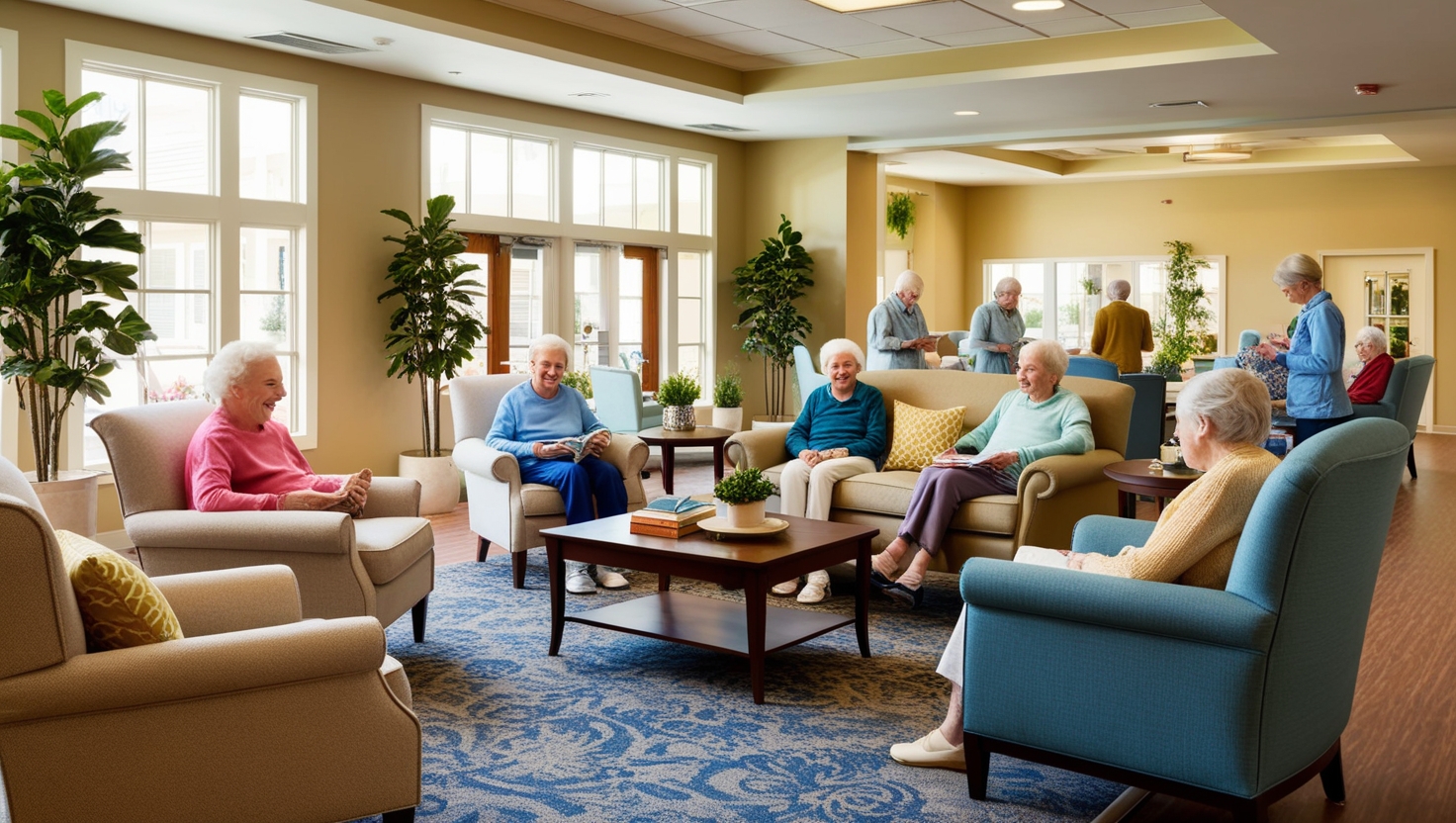The aging of the population makes assisted living, for many seniors and their families, a considered option in maintaining quality of life and receiving much-needed care. Assisted living combines independence with care and support to assist seniors in the activities of daily living, providing a community in which to live. But one very common question seems to be: How does a senior qualify for assisted living? Understanding the eligibility helps the families to make appropriate decisions on behalf of their loved ones.

Assessing Assisted Living Need
Eligibility regarding a senior is analyzed through his needs: physical and mental/emotional. Basic considerations include:
Activities of Daily Living (ADLs):
These are the major things a person is supposed to do for himself or herself in order to live independently. Examples of ADLs include bathing, dressing, eating, toileting, and mobility. A senior who has difficulties with one or more of these may be considered for assisted living, wherein staff can provide support if needed.
Instrumental Activities of Daily Living (IADLs):
These activities involve the management of life on a day-to-day basis, including cooking, cleaning, managing medications, and handling finances. Difficulty with IADLs is another indicator that a senior may benefit from services provided in an assisted living facility.
Cognitive Function:
Seniors with cognitive decline, such as those with Alzheimer’s disease and other dementias, create an interference with their normal ability to live independently. Assisted living communities are increasingly adding specially designed memory care units intended for residents with cognitive impairments.
Safety Concerns:
When safety is a concern-a senior is at risk of falling, wandering, or other safety concerns-assisted living offers around-the-clock supervision and often includes emergency response systems.
Financial Qualification for Assisted Living
How Assisted Living is considered financially can be key to determining qualification for a senior. Assisted living can be quite expensive, and it definitely varies depending on location, level of care required, and type of facility. Here’s how seniors qualify:
Personal Savings and Assets:
The majority of seniors use their savings, retirement accounts, or proceeds from selling a house to cover their costs associated with assisted living. That long-term health care budgeting is so important, because the cost of assisted living can add up over time.
Long-Term Care Insurance:
Many assisted living costs may be partially reimbursed through payment or fully by long-term care insurance in which a senior has. Policies differ; it is in this area that a review of the terms is necessary.
Medicaid:
Medical and financial eligibility can qualify some seniors for assisted living costs paid by Medicaid. Not all states offer Medicaid for assisted living, and not all facilities accept Medicaid. Generally speaking, seniors who require Medicaid assistance should spend down most of their assets.
Veterans Benefits:
The VA has available financial assistance to qualifying veterans and their spouses. One such benefit is the Aid and Attendance benefit that supplies additional funds to those veterans needing attendant care.
Social Security:
Again, the benefits may not be enough to support an entire fee; however it can supplement other income sources.
Determining Medical Qualification
Medical qualifications form a large part of the basis on which a senior qualifies to be admitted for assisted living. The major medical criteria include: Chronic Health Conditions: Seniors suffering from chronic health conditions like diabetes, heart disease, or arthritis can benefit from this kind of living because such ailments require ongoing management and care. Employees in these facilities can monitor the health of the elderly and also offer medication on time, among other assistance.
Mobility Issues:
When older adults experience difficulties in walking or getting around, whether because of age, injury, or illness, they will find assisted living more suitable to their needs than living independently. These facilities incorporate features that promote accessibility and may even offer physical therapy services aimed at maximizing residents’ mobility.
Medication Management:
Most seniors have to take several medicines. Assisted living provides medication management through which one is assured of the correct dose and timeliness, which averts complications.
Rehabilitative Needs:
Many elderly people, at one time or another, require rehabilitative services after hospitalization or after certain surgery. Most assisted living facilities have rehabilitation programs and are thus a better option for such seniors who may need continued therapy.
Legal and Documentation Requirements
Other requirements to qualify for assisted living include legal and documentation requirements. These, too vary from state to state and even from facility to facility, but they most often require the following:
Physician’s Evaluation:
This most often requires a medical evaluation by a physician, which helps in deciding if a senior is fit enough to enter assisted living. This evaluation will provide specific detail on the status of the senior’s health and even their cognitive condition, along with the level of assistance that may be required with ADLs and IADLs.
Advanced Directives:
Advanced directives such as a living will and durable power of attorney for health care, should be on record for all seniors entering an assisted living arrangement. This provides documentation regarding the wishes of the senior in regard to medical treatment and who should act on their behalf if they become incompetent.
Financial Documentation:
To be qualified for Medicaid or any other financial assistance program, in this regard, seniors will need to provide documentation of income, assets, and expenses. It may include but is not limited to tax returns, bank statements, and any records of existing insurance policies.
Residency Agreements:
Assisted living facilities require a residency agreement that will identify specific terms and conditions for residency. These include the costs, services offered, rights, and responsibilities of both the resident and the facility.
Picking the Right Assisted Living Facility
Once a senior has been qualified to receive assisted living, the next step involves selecting the proper facility. Here are a few things to consider:
Location:
Being close to family and friends is also one of the key considerations when choosing an assisted living facility. It allows you to be much closer with your loved one if it is close to them.
Amenities and Services and amenities vary from one facility to another, offering a wide range of care and services. Some may cater to seniors who have dementia while others provide independent living with limited assistance. It will be important to pick a facility that suits the needs of the particular senior.
The cost can be quite different from one assisted living facility to another. Thus, finding a facility within the senior’s budget that can provide the needed level of care is very important.
Staff Qualifications:
All qualifications and experiences of staff are pretty important, focusing on how the senior will receive good care. Whether there is any kind of staff training or certification is an area of questioning; in addition, asking about the staff-to-resident ratio will provide some insight.
Reputation:
This will involve looking into the facility’s reputation, which includes reviews and ratings of current and previous residents and will be quite telling about the quality of care provided.
Conclusion
Qualifying for assisted living incorporates a mix of determining the need for care on the part of the senior in terms of physical, cognitive, and financial levels, together with meeting some sort of legal threshold requirement. Knowing how a senior qualifies for assisted living can help families make the best possible decisions about their loved one’s care. In carefully considering the options and weighing the specific needs of the senior, a family will find a facility that offers just the balance of independence, support, and quality of life.
